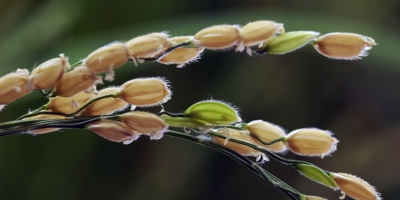Susceptibility

To be able to colonise plants, beneficial microbes, pathogens and pests produce ‘effectors’ which interact with specific plant targets to re-programme plant pathways.
Some effectors induce dramatic changes in plants, such as pustules and galls that provide a local habitat for the pathogen and that promote their dispersal. In beneficial symbiotic associations signal exchange between the microbe and plant activates developmental processes that facilitate the colonisation of the host plant for example the development of nodules housing beneficial bacteria on the roots of pulse crops.
We will investigate the molecules that are targeted by effectors and use this knowledge to manipulate the balance between defence response and yield and responses to harmful verses beneficial organisms.
Plant recognition and response processes are modulated so that plants become susceptible to colonisation. To promote colonisation, pathogens and pests produce virulence factors, called effectors, which interact with specific plant targets to re-programme plant pathways, a process referred to as effector-triggered susceptibility (ETS).
Effectors include proteins, mimics of plant hormones and non-proteinaceous toxins. Some effectors induce dramatic developmental changes in plants, such as pustules, galls and witch’s brooms that provide a local habitat for the pests or pathogens and that promote their dispersal. In other cases, particularly in beneficial symbiotic associations, signal exchange between the microbe and the plant activates developmental processes that facilitate colonisation of the host plant.
With the knowledge that we have already generated on effectors, their targets and associated signalling processes, we are in a unique position to investigate the specificities of effector-target interactions and the signalling pathways activated to regulate downstream processes that eventually promote plant colonisation.
- Objective 3.1 – Discovery and specificity of effector-target interactions (Professor Mark Banfield, Dr Christine Faulkner, Professor Jonathan Jones, Professor Sophien Kamoun, Professor Saskia Hogenhout, Dr Jacob Malone, Professor Paul Nicholson, Professor Nick Talbot)
- Objective 3.2 – Mechanisms of establishment and maintenance of plant-biotic interactions (Dr Janneke Balk, Professor Saskia Hogenhout, Professor Paul Nicholson, Professor Nick Talbot)
- Objective 3.3 – Environmental factors impacting plant-biotic interactions (Professor Ray Dixon, Dr Jacob Malone)
- Objective 3.4 – Applications for improved crop performance (Professor Mark Banfield, Dr Janneke Balk, Professor Ray Dixon, Professor Saskia Hogenhout, Professor Jonathan Jones, Professor Sophien Kamoun, Professor Nick Talbot)
